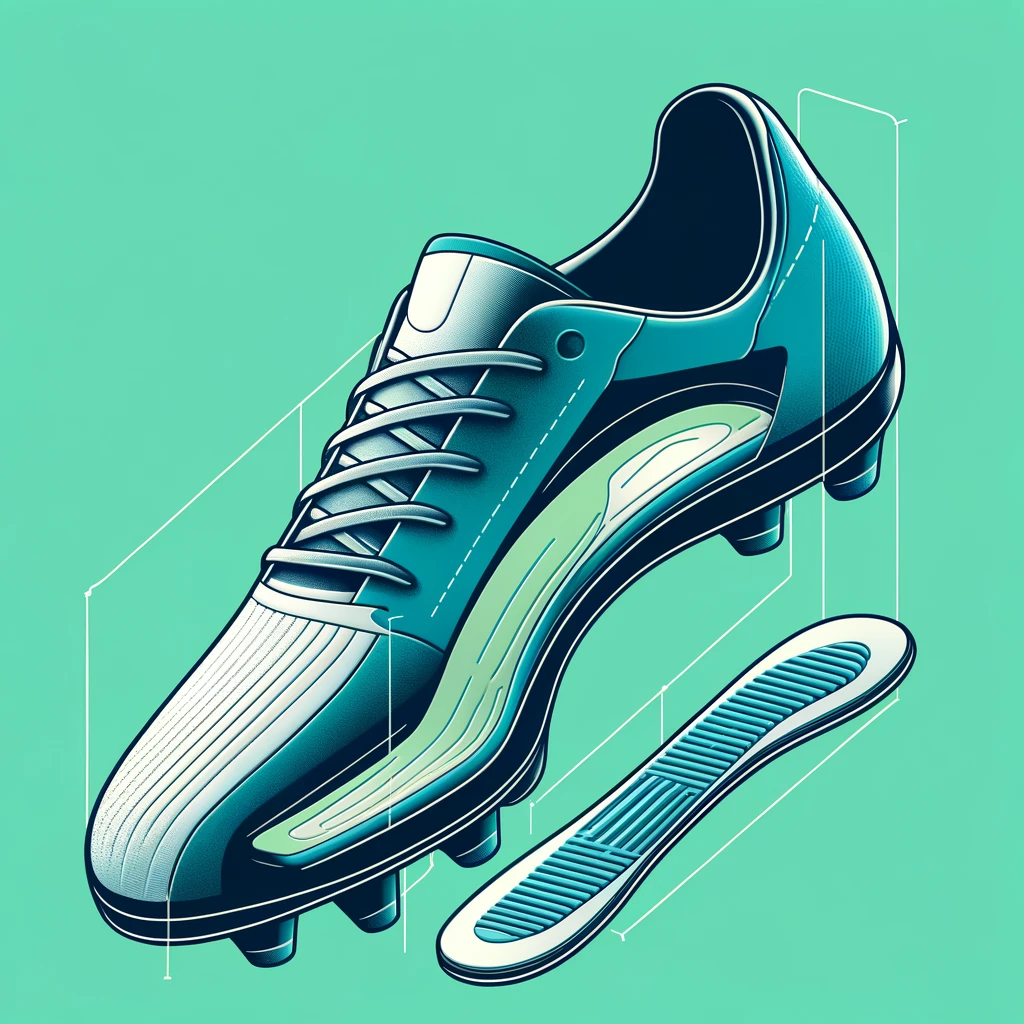Integrating orthotics into your soccer cleats can provide additional support, enhance comfort, and potentially improve your performance by aligning your feet properly. This guide will show you how to choose and use orthotics effectively with your soccer cleats.
Introduction
Many soccer players, from amateurs to professionals, suffer from foot discomfort or have conditions such as flat feet or plantar fasciitis. Using orthotics—specially made devices designed to support and comfort your feet—can help alleviate these issues.
Understanding Orthotics
Types of Orthotics
- Custom Orthotics: Specially made from a mold of your foot, providing tailored support.
- Over-the-Counter Orthotics: Pre-made and available in various sizes and shapes. Less expensive but less customized.
Benefits of Using Orthotics in Soccer Cleats
- Improved Foot Alignment: Proper alignment reduces the risk of injury and can improve the efficiency of your movements.
- Enhanced Comfort: Helps distribute pressure evenly across your feet.
- Increased Performance: With better support and reduced discomfort, players can focus more on their game.
How to Incorporate Orthotics into Your Soccer Cleats
Step 1: Choose the Right Orthotics
- Consult a Podiatrist: Especially if you consider custom orthotics, a podiatrist can assess your foot’s specific needs.
- Consider Your Foot Arch: Ensure the orthotic matches your arch type—high, low, or neutral.
Step 2: Ensure Proper Fit of Cleats
- Select the Right Size Cleats: Make sure there is enough room in your cleats to accommodate the orthotic without being too tight or causing pressure points.
- Check for Removable Insoles: Remove the existing insoles if possible to make space for the orthotics.
Step 3: Test and Adjust
- Insert the Orthotics: Place the orthotics into your cleats and press them down firmly.
- Wear Your Cleats: Try walking and then running to see how they feel. Make sure there’s no slippage or discomfort.
Step 4: Evaluate the Fit
- Check for Pinching or Tightness: The cleats should not feel overly tight with the orthotics in place.
- Ensure Enough Toe Room: Your toes shouldn’t touch the front of the cleats, as this can lead to discomfort when running or kicking.
Tips for Maintenance and Care
- Rotate Cleats Regularly: If possible, have a couple of pairs of cleats to rotate between to reduce wear and tear.
- Clean Orthotics Regularly: Keep the orthotics clean and dry to prevent bacterial growth and odor.
Frequently Asked Questions (FAQs)
Can I use any type of orthotic in my soccer cleats?
Not all orthotics are suitable for soccer cleats due to space and fit considerations. It’s important to choose slim, low-profile orthotics designed for athletic shoes to ensure they fit properly without altering the shoe’s internal dimensions significantly.
How do I know if my orthotics fit correctly in my soccer cleats?
Properly fitting orthotics should not cause your cleats to feel overly tight or alter your foot positioning within the shoe. There should be no excessive movement of the foot or orthotic when running or changing direction.
Will orthotics affect my ability to feel the ball?
While orthotics can change the feel inside your cleats slightly, they should not drastically affect your ball touch. High-quality orthotics designed for athletic use are made to enhance comfort without compromising performance.
How long do soccer cleat orthotics last?
The lifespan of orthotics varies based on the material, how often you play, and the conditions in which you use them. Generally, it is advisable to replace them once they show signs of wear or when they no longer provide the necessary support.
Can I transfer my orthotics from one pair of soccer cleats to another?
Yes, you can transfer orthotics between shoes as long as they fit properly in each pair. However, keep in mind that orthotics might conform slightly to the specific shoe’s internal shape over time, so adjustments may be necessary when switching them between different cleats.
Do I need to break in my orthotics?
Yes, like many foot support products, orthotics usually require a break-in period. Start by wearing them for short periods during training and gradually increase the time as your feet adjust to the new support level.
Should I consult a professional before using orthotics in my soccer cleats?
If you have specific foot health issues or complex biomechanical needs, consulting with a podiatrist or a professional who specializes in orthotics is recommended. They can provide guidance and ensure that the orthotics are correctly tailored to your needs.
Conclusion
Incorporating orthotics into your soccer cleats can significantly benefit your foot health and game performance. With the right pair of orthotics, you can enjoy enhanced support, improved comfort, and a lower risk of foot-related injuries.
Check out our blog for more interesting articles!
